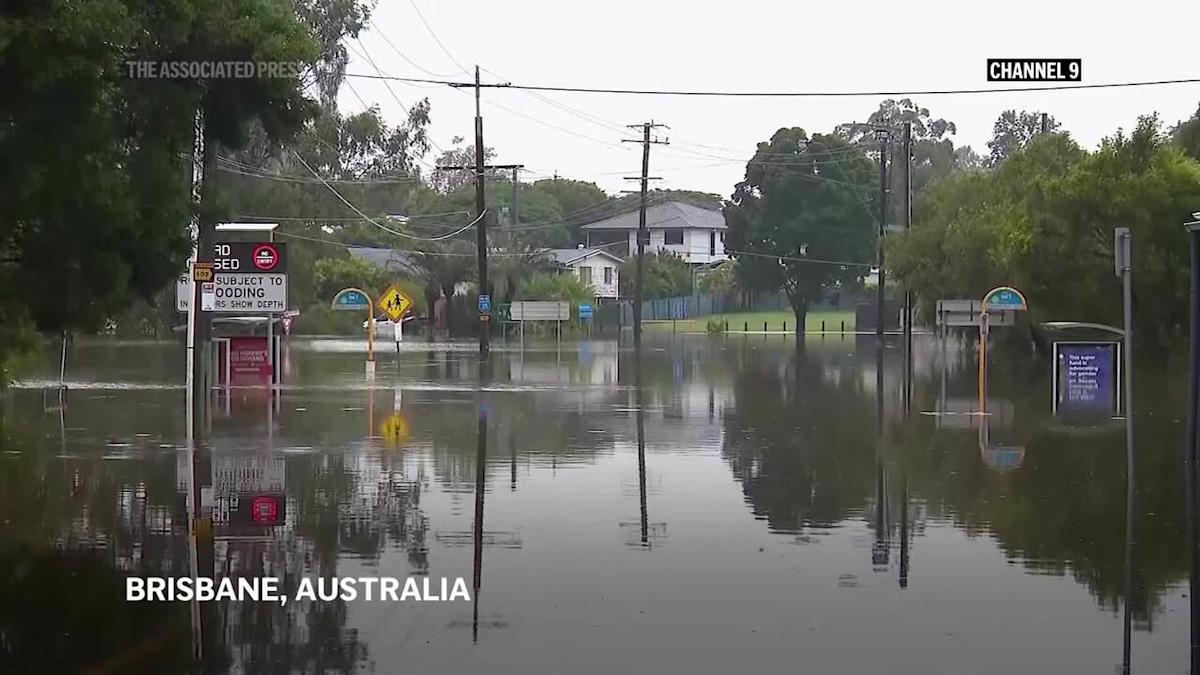Rising Waters: Australia’s East Coast Faces Dual Threat of Flooding and Tropical Storm Recovery
As communities along Australia’s east coast begin the challenging cleanup process following a recent tropical storm, they are simultaneously bracing for the risk of severe flooding. This dual threat has left many residents and authorities on high alert, navigating the delicate balance between recovery efforts and the looming danger of rising waters. The situation, which has caused significant disruption and distress, underscores the increasing frequency of extreme weather events in the region.
The Immediate Aftermath of the Tropical Storm
The tropical storm, which swept through the eastern seaboard, brought with it devastating winds and heavy rainfall. Many areas experienced power outages, road closures, and property damage. In the wake of such chaos, local governments and emergency services have mobilized to assist affected communities, focusing on restoring essential services and providing support to those in need.
Cleanup efforts have commenced, with volunteers and organizations stepping up to help. Here are some of the primary actions being undertaken:
- Debris Removal: Teams are working tirelessly to clear roads, homes, and public spaces of fallen trees, damaged structures, and other debris.
- Assessment of Damage: Local authorities are conducting comprehensive assessments to determine the extent of damage and identify areas that require immediate assistance.
- Health and Safety Checks: Public health officials are monitoring the situation closely, ensuring that communities have access to safe drinking water and adequate sanitation facilities.
The Flood Risk: A Growing Concern
As cleanup efforts progress, the risk of flooding remains a critical concern for many communities. Heavy rains can quickly lead to rising waters, particularly in areas that have already been saturated by the storm. Meteorologists warn that the combination of saturated ground and additional rainfall could result in flash flooding, endangering lives and property.
Authorities are particularly vigilant in monitoring river levels and weather forecasts. Here are some strategies being implemented to mitigate the flooding threat:
- Flood Warnings: Meteorological agencies are providing regular updates and warnings to keep communities informed of potential flooding risks.
- Evacuation Plans: Local governments are developing and communicating evacuation plans for areas most at risk, ensuring residents know where to go in case of an emergency.
- Infrastructure Preparedness: Authorities are assessing the capacity of drainage systems and levees to handle increased water flow, making necessary adjustments to prevent overflow.
Community Resilience and Support
Throughout this challenging time, community resilience shines through. Residents are banding together, supporting one another, and sharing resources. Grassroots organizations and local businesses are playing a crucial role in providing aid, whether through food drives, temporary shelters, or financial assistance for those affected by the storm.
The importance of community resilience cannot be overstated. It not only contributes to effective recovery but also fosters a sense of solidarity among residents. Here are some ways communities are demonstrating resilience:
- Volunteer Efforts: Many locals are volunteering their time and resources to help neighbors in need, illustrating the strength of community spirit.
- Local Fundraising: Fundraisers and donation drives are being organized to aid recovery efforts and support those who have lost their homes or livelihoods.
- Emotional Support Services: Mental health professionals are offering counseling services to help individuals cope with the trauma associated with the storm and flooding.
Long-Term Strategies for Climate Resilience
The recent events along Australia’s east coast highlight the pressing need for long-term strategies to address the increasing frequency and intensity of extreme weather events. Climate change plays a significant role in this pattern, and it is crucial for both government and community leaders to prioritize sustainable solutions.
Some potential strategies for enhancing climate resilience in the region include:
- Improved Urban Planning: Developing infrastructure that considers future climate risks, such as elevated buildings and enhanced drainage systems, can better prepare communities for extreme weather.
- Reforestation and Wetland Restoration: Restoring natural landscapes can help absorb excess rainfall and reduce flooding risks.
- Community Education Programs: Raising awareness about climate change and its impacts can empower residents to take proactive measures to safeguard their homes and communities.
The Role of Government and Policy Makers
Government response is vital in times of crisis. Policymakers are urged to prioritize funding for disaster recovery and climate adaptation measures. It is not just about responding to immediate threats; it’s also about creating a framework for resilience that can withstand future challenges.
Key actions for government and policymakers include:
- Emergency Response Funding: Allocating resources for immediate disaster relief and recovery efforts is essential for affected communities.
- Investment in Infrastructure: Enhancing infrastructure to withstand flooding and storms will save lives and reduce economic losses in the long run.
- Collaboration with Scientists: Engaging with climate scientists to understand future risks and develop informed policies based on sound data is crucial.
Conclusion: Hope Amidst Adversity
As Australia’s east coast faces the dual threats of flooding and recovery from a tropical storm, the resilience of its communities is evident. While the immediate challenges are daunting, the combined efforts of local residents, government officials, and organizations demonstrate a commitment to rebuilding and preparing for the future.
In times like these, hope remains a powerful catalyst for change. By fostering community spirit, investing in sustainable solutions, and prioritizing safety, Australia can not only recover from this storm but also emerge stronger and more resilient against the challenges posed by climate change and extreme weather.
See more Your Daily Weather



